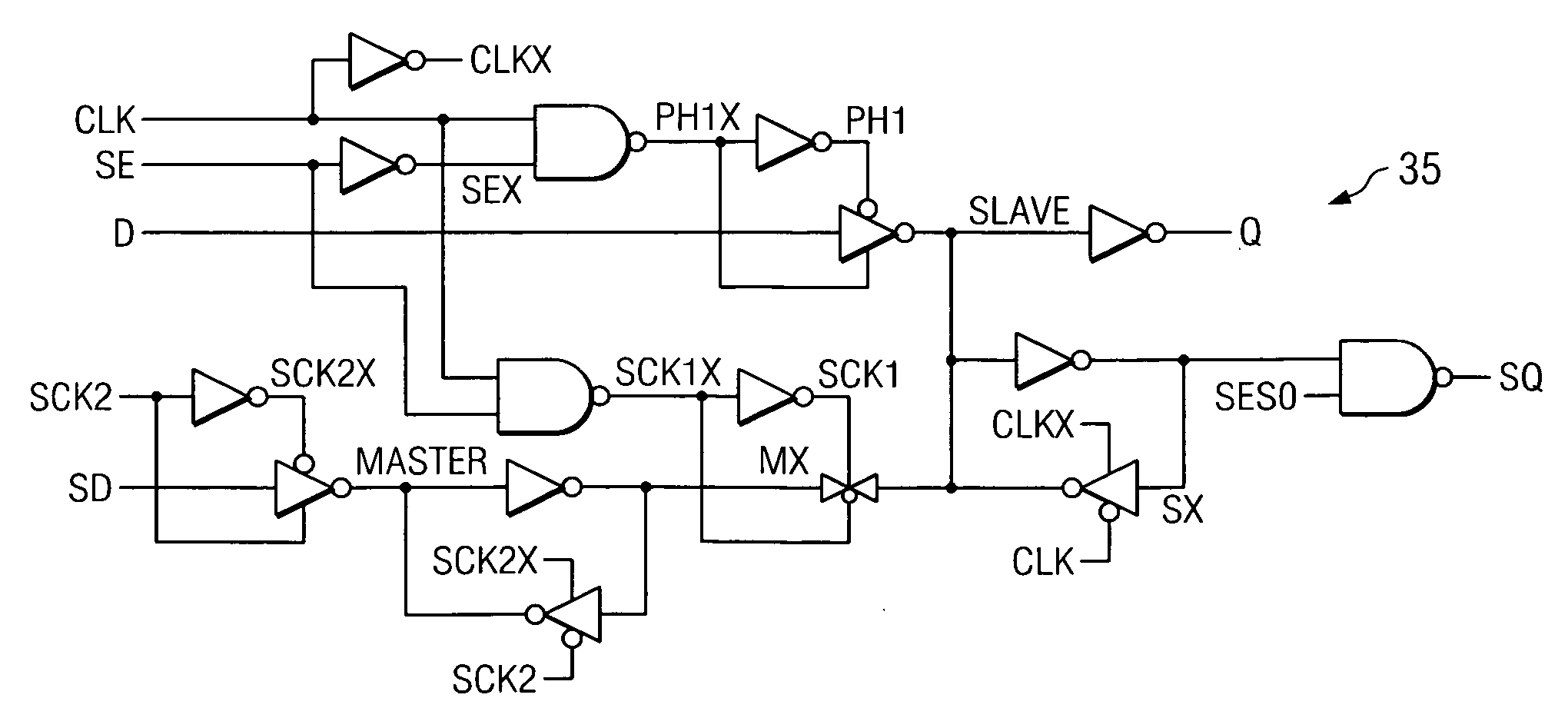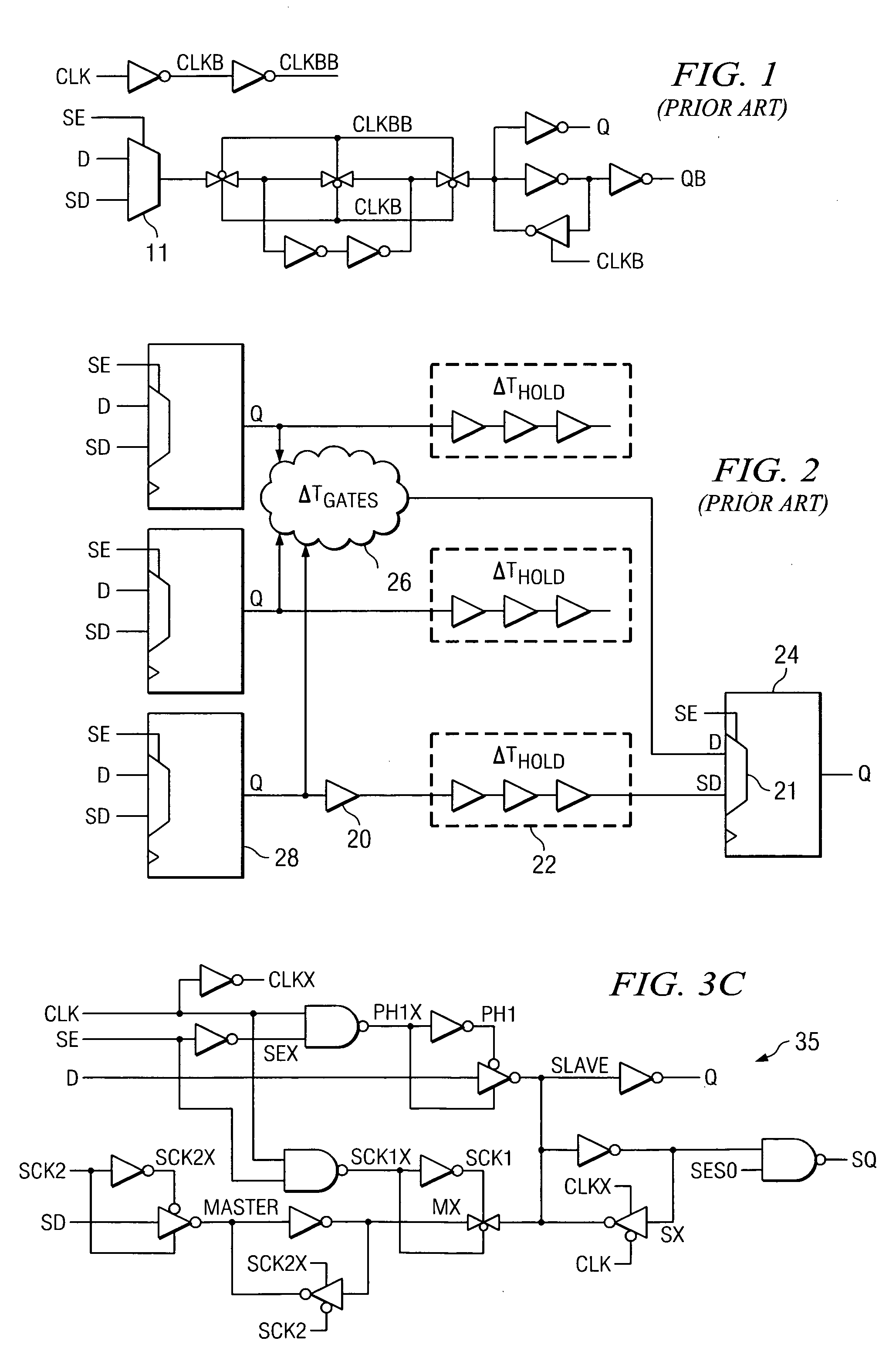Digital design component with scan clock generation
a digital design and clock generation technology, applied in the field of flip-flop design elements and scan clock generation therefor, can solve the problems of consuming one gate delay budget of critical path gate delay, affecting the operation frequency of a chip, and increasing the critical data path delay of functional mode data, so as to reduce the noise generated and critical path delay, reduce the area consumed by the chip, and eliminate the violation of scan mode hold
- Summary
- Abstract
- Description
- Claims
- Application Information
AI Technical Summary
Benefits of technology
Problems solved by technology
Method used
Image
Examples
Embodiment Construction
[0047] The present invention integrates the functionality of a scan mode multi-plexer into the structure of the flip-flop with non-overlapping scan mode clocks. The new flip-flop structure uses two non-overlapping clock signals during scan mode. The two clock signals can be generated according to a number of different techniques.
[0048] The scan mode flip-flop function previously realized as a two to one multiplexer and a single port latch, is obtained with a dual port latch with integrated clock gate, thereby providing a number of significant advantages. One particular advantage is that the novel flip-flop structure according to the present invention has many of the same features when viewed externally as previous muxed scan flip-flop elements so that it can be readily used in traditional tools and architectures. That is, the flip-flop maintains compatibility and portability with design tools. One difference is an additional scan mode clock provided to the flip-flop, which can be r...
PUM
 Login to View More
Login to View More Abstract
Description
Claims
Application Information
 Login to View More
Login to View More - R&D
- Intellectual Property
- Life Sciences
- Materials
- Tech Scout
- Unparalleled Data Quality
- Higher Quality Content
- 60% Fewer Hallucinations
Browse by: Latest US Patents, China's latest patents, Technical Efficacy Thesaurus, Application Domain, Technology Topic, Popular Technical Reports.
© 2025 PatSnap. All rights reserved.Legal|Privacy policy|Modern Slavery Act Transparency Statement|Sitemap|About US| Contact US: help@patsnap.com



